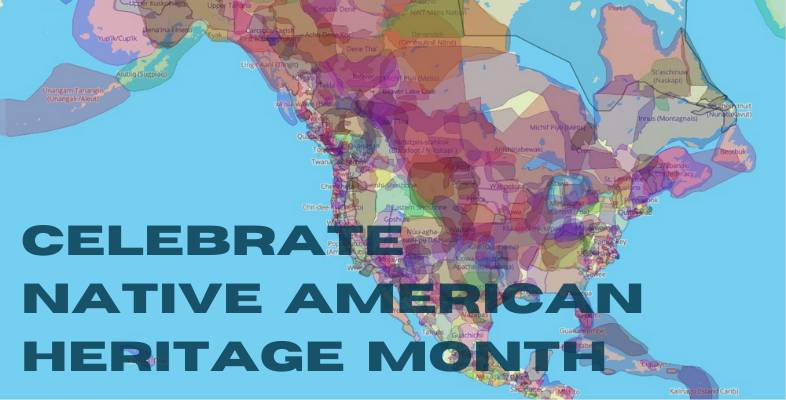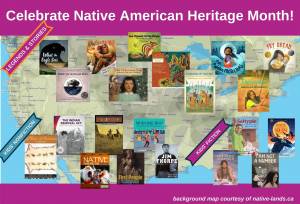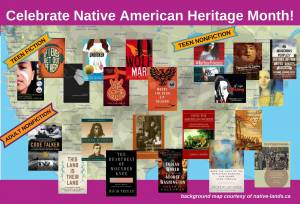
What is Native American Heritage Month?
Native American Heritage month (also called American Indian and Alaska Native Heritage Month) was created to celebrate Indigenous peoples’ “rich and diverse cultures, traditions, and histories, and to acknowledge the important contributions of Native people” in the United States (excerpted from the National Congress of American Indians website).
Native American history: A long span
Estimates say at the time of European contact over 500 years ago, there were 50 to 100 million people living in North America. Those people had been living in the Americas for thousands of years by the time the New World was ‘discovered’ by Europeans. Over the following centuries, the newcomers and existing peoples had many interactions, some good, some bad*. Just like today, each group of people living in the Americas had their own customs, traditions, beliefs, languages, and mores. They had partnerships and rivalries with one another, as well as with the newcomers. It all adds up to a fascinating and rich history.
Abandon stereotypes about Native Americans
Films and storybooks sometimes boil ‘Native Americans’ down to a simple stereotype. The truth is, there isn’t just one kind of Native American. There are almost 8 million persons in the United States who claim Native ancestry. And many more American Indigenous people live in Canada, Mexico, and throughout Central and South America.
There are currently 574 Native American tribes**, each with unique identities, struggles, and triumphs. Contact with Europeans, other non-Native peoples, and with one another have shaped their histories. Native American*** Heritage Month is a chance to explore the realities of our shared history. We can challenge preconceptions we may have about Native cultures. We can work to appreciate ways that Native peoples continue to contribute to the United States today.
Below are some books that explore different beliefs, folk stories, histories, and perspectives. We have included as many works as possible from Native and Indigenous voices. We hope everyone takes this chance to learn something new about the Indigenous peoples of the area now known as the United States of America.
Click the PDFs to open; click a cover to jump to the catalog to check out the book. Right click and choose “Open In New Tab” if you want to keep the map open. Note, this book selection only scratches the surface!
Explore more:
Learn the history of the land you are living on (or where you visit) at native-land.ca (This is where our featured image comes from!)
The National Congress of American Indians website is a great place to explore the federally-recognized tribes’ perspectives and current issues with which they are grappling.
Learn about Native American History Month celebrations at this national website—TONS of great info for all ages here!
The Diversity Studies Gale Database lets you search current news on diversity topics, including ‘Native Americans.” FREE with your YCL card!
Notes:
*William Penn, for one, envisioned Pennsylvania as a peaceful shared space for both native people and settlers. But his vision did not come to reality. (You can check out our Adult Book Selections to start exploring why not).
**Not all Indigenous people use the term ‘tribes.’ Other self-referential terms include ‘pueblos,’ ‘nations,’ ‘bands,’ ‘communities,’ and many others. Here, we are using ‘tribes’ in its common sense, but we acknowledge that specific groups may prefer different terms in English.
***Similarly, we are using “Native American” and “American Indian” as commonly-understood terms. We acknowledge that these, too, may be less-favored by different people.


